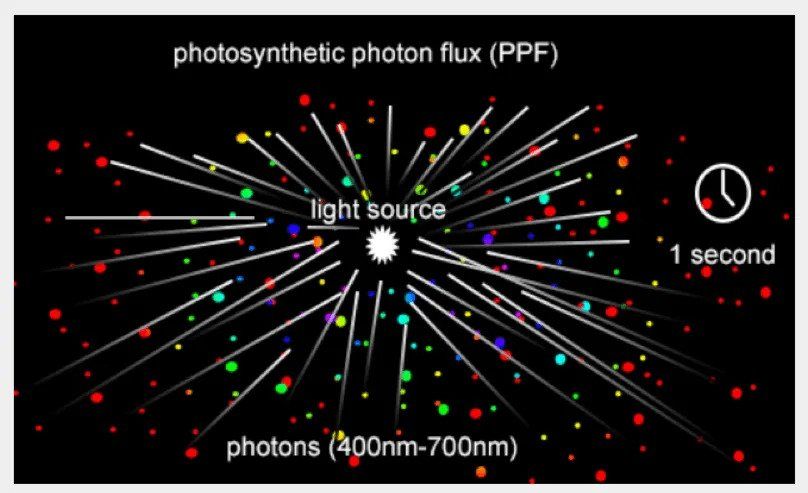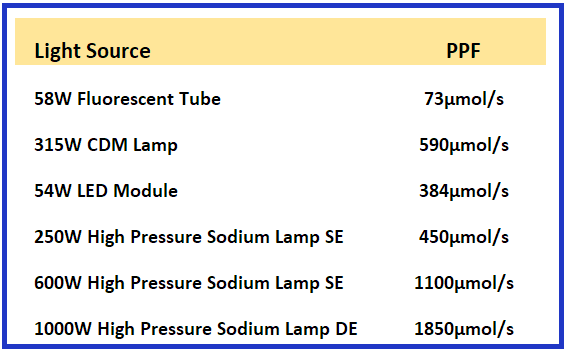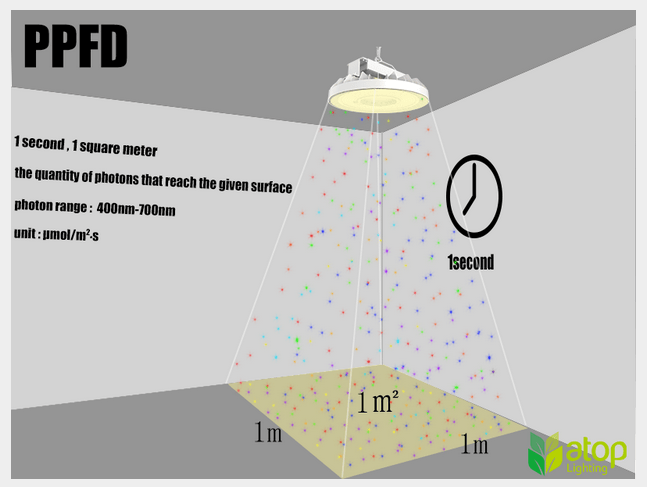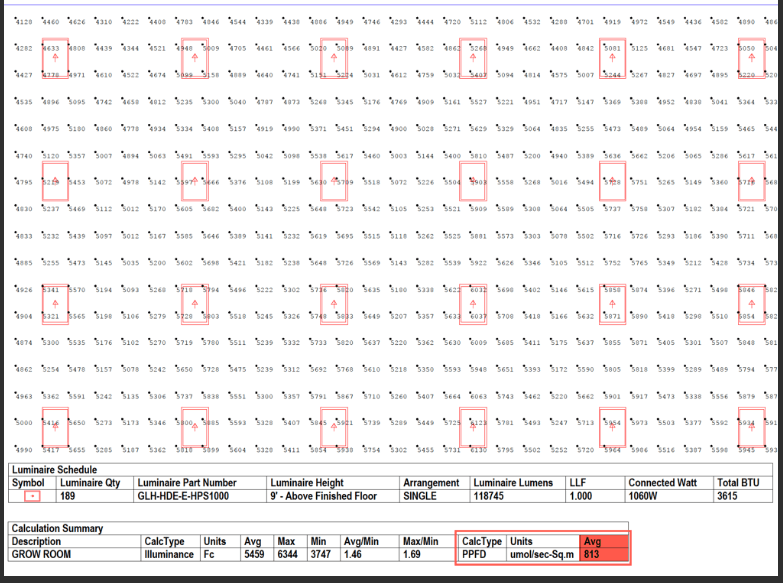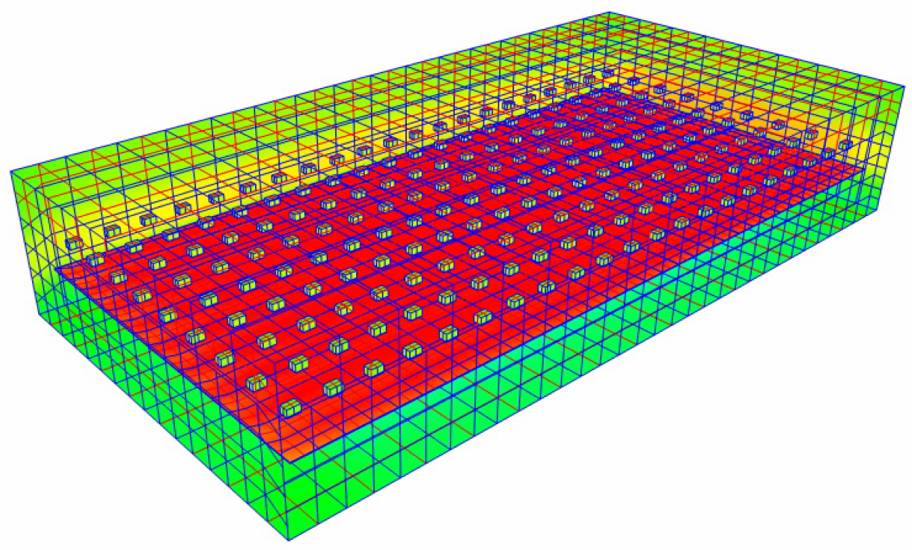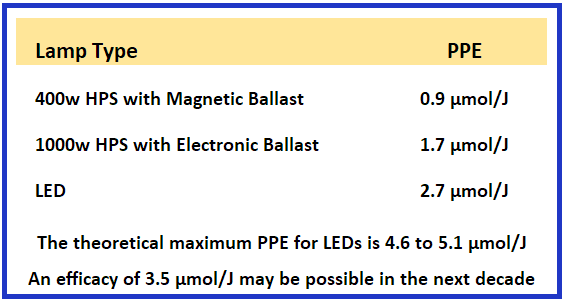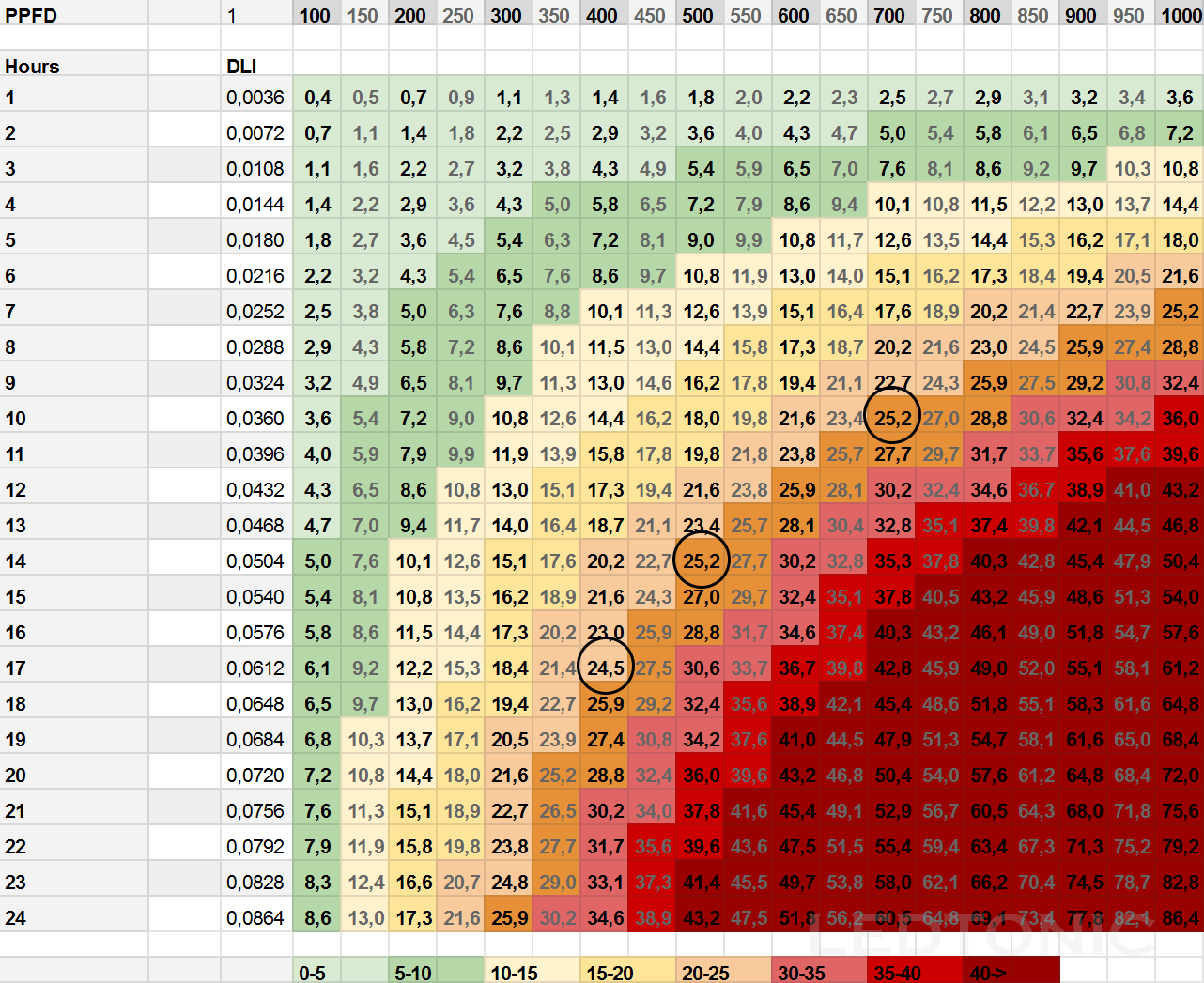How to Measure PAR in terms of Intensity, Density, & Efficacy
Photosynthetic Photon Flux (PPF) as a measure of light intensity, is how many photons of photosynthetically usable light per second are being emitted by a light source. Emitted photons are captured, measured, and converted into a unit of measurement called micromoles per second (μmol/s).
PPF does not consider the direction in which the light is emitted, and does not provide information on the amount of light which actually arrives at the plants. It does provide a way of comparing different light sources in terms of the total light output which can in theory contribute to photosynthesis. PPF output can be measured in an Integrating Sphere.
Sample PPF Table
Topic: PPF and PPFD Comparison Guide
Photosynthetic Photon Flux Density (PPFD) describes the number of energy particles (photons) in the photosynthetic active radiation (PAR) range that fall on a one square meter area in one second. PPFD is measured using a PAR meter.
Low PPFD irradiance may limit photosynthesis at the leaf surface. High PPFD irradiance in excess of photosynthetic needs at the leaf surface may be a threat to plant metabolism. Uniformity is one of the best calculations for determining the evenness of your lamp over the entire garden as well as the density of the radiation. PPFD is a shorthand average. Uniformity checks the evenness of the PPFD.
Topic: Typical PPFD Values per Crop
Instruments for Measuring PAR, PPF, and PPFD
Understanding Terminology (PAR, PPF, PPFD, PFD)
Photon Flux Density (PFD) as a measure of light density in a given area, is the number of micromoles of active photons (300-800nm) per square meter per second. Similar to PPFD above, but also inclusive of ultraviolet and far-red radiation.
Photosynthetic Photon Efficacy (PPE) The metric for determining plant lighting efficacy, measured in μmol/J. This measures the light fixture’s efficiency in converting watts of electrical energy into emitted photons of PAR. Also called PAR Efficacy.
PPF is the PAR photon output of a light source (measured in micromoles per second or µmol/s) divided by the input power (W) to produce that light, where 1 Watt = 1 joule / second PPE = PPF / W = (µmol/s) / (joule/second) = μmol/J
Topic: Plant Lighting Efficiency and Efficacy
Daily Light Integral (DLI) describes the number of photosynthetically active photons (individual particles of light in the 400-700 nm range) that are delivered per square meter in a 24-hour period, most often during a designated amount of time (example 10 / 14 / 17 hours shown below).
DLI is expressed as moles per square meter per day
DLI = PPFD (60 seconds in a Minute x 60 minutes in an hour x the number of hours / 1,000,000 = (number of moles delivered in a day).
Example: You are growing cucumbers and want to give them around 25 DLI.
By looking at the chart below, approximately 25 DLI is achieved by exposing the plant to:
500 PPFD over 14 hours, or 400 PPFD over 17 hours, or 700 PPFD over 10 hours
Topic: Understanding DLI and Photoperiod Requirements


